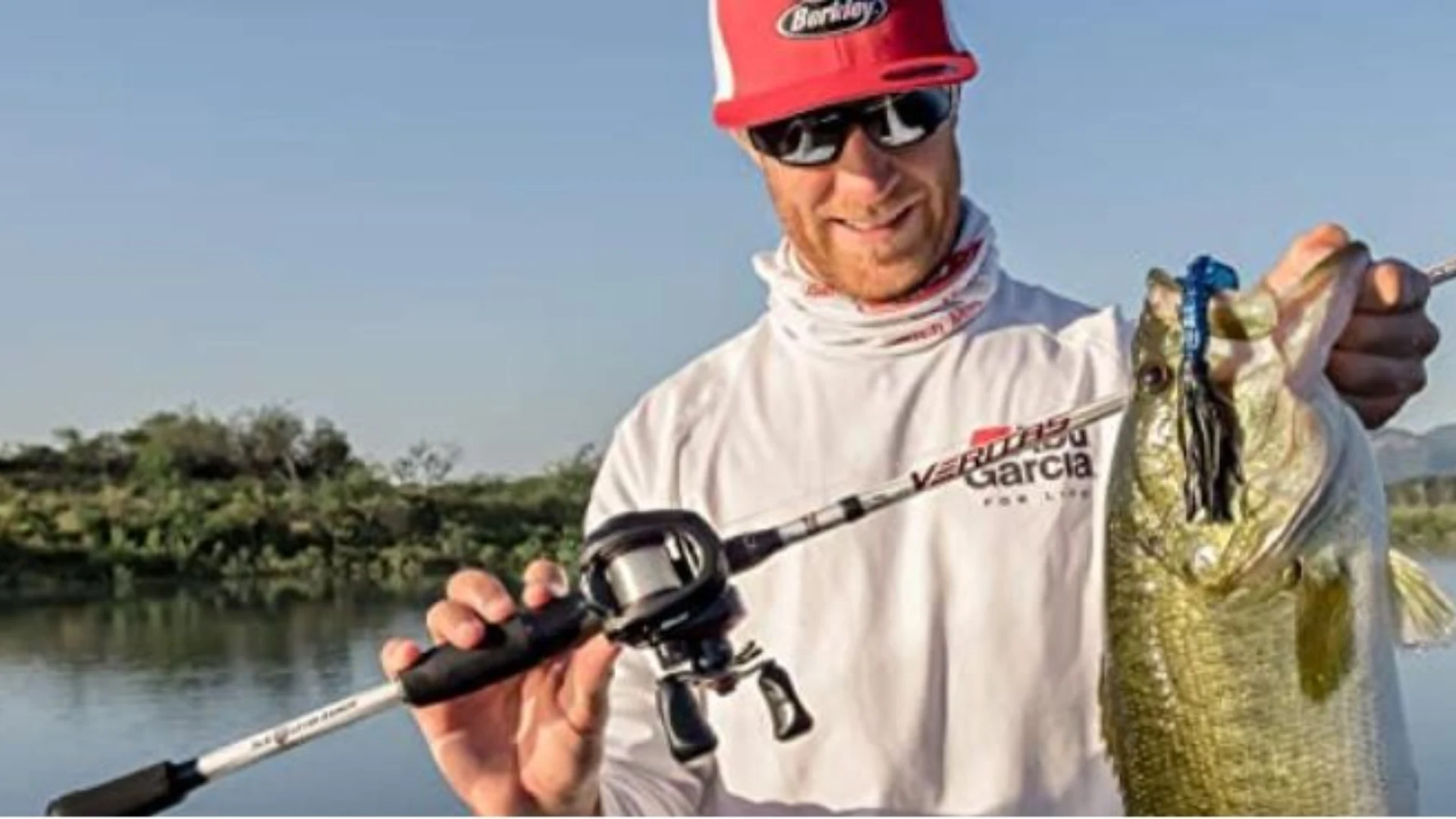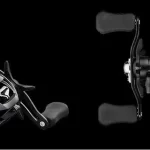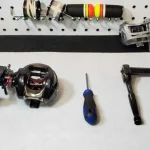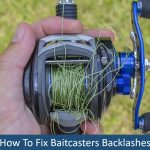Fishing is a rewarding and relaxing hobby that can be enjoyed by people of all ages and skill levels. However, to get the most out of your fishing experience, you need to have the right equipment and techniques. Baitcasting Reel is one of the most important equipment fishing gears, which holds and releases the fishing line. There are different types of fishing reels, such as spinning reels, spincast reels, and baitcasting reels. Each type has its own advantages and disadvantages, but here, here I am focusing on the benefits of a baitcaster reel.
A baitcaster reel is a type of reel that has a rotating spool that rotates as you cast and retrieve the line. This allows you to have more controlled and precise casts, as well as more power and versatility over your lures. It can help you to accurately cover long distance casts with higher control over your lure. Handling heavier lines and lures, is as easy as nuggets by using baitcasters for catching bigger and stronger fish. It is offering different gear ratios for different retrieve speeds, which can help you adapt to different fishing scenarios and techniques.
However, along with a lot of Pros a baitcaster reel have, there are some challenges a baitcasting reel have. It requires more skill and practice to use it properly, as it is more prone to backlash and tangles than other types of reels. A baitcaster reel also tends to be more expensive and complex than other types of reels, which means it needs more maintenance and care. Therefore, a baitcaster reel is recommended for beginners but with a little bit of practice and passion is required for successful cast.
If you are serious about fishing and wants to elevate your fishing game to the next level, then you must have to master baitcaster reel in your arsenal. A baitcaster reel can help you to catch more fish and have more fun on the water. In this article, I will share the benefits of a baitcaster reel in more detail and provide some tips on how to use it effectively and enjoy its great benefits.
5 Benefits of a Baitcaster Reel
Baitcasting reels are famous for their accurate and precise casting among angler. Some consider it their first choice for the precise long distance casting. Every angler has their own different preferences with regard to species, geography, and techniques. This means a particular baitcasting reel that may be best fit for one angler may not necessarily suit another. However, there are some general benefits of using a baitcaster reel that apply to most fishing situations and styles. In this article, I will share some of these benefits and explain why anglers must have baitcasters in their fishing game. I will also share some tips on behalf of my experience i.e. how to use a baitcaster reel effectively and enjoy its great benefits.
1. Long Casting Distance with Accuracy
Long distance casting is one of the most prominant benefit of a baitcaster reel. It allows you to cast farther and more accurately than any other types of reels. This is because a baitcaster reel has a spool that rotates as you cast, which means the line comes off the spool in a straight line. This reduces friction and drag on the line, which can affect the distance and direction of your cast. A baitcaster reel also gives you more control over the speed and force of your cast, which enables you to adjust your casting technique according to the wind, water, and target conditions. From thumb control you can stop the spool from spinning to land the lure in your desired spot.
2. Allows More Control Over the Lure
Baitcasting Reel allows you incredible casting control over the movement and action of your lure. A baitcaster reel has a handle that is directly connected to the spool, which means you can feel every twitch and vibration of your lure as it travels through the water. This allows you to manipulate your lure more effectively and react quickly to any changes in the water or fish behavior. You can use different fishing techniques i.e. flipping, skipping or jigging with baitcasters to present your lure in a more natural way.
3. Easy to Handle Heavy Lines and Lure
A baitcaster reel is also ideal for handling heavier lures and lines, also suitable for fighting with big fishes like Bass. A baitcaster reel has a sturdy frame and a powerful drag system that can survive under the pressure and tension of heavy lines and lures without breaking or malfunctioning. As compare to other reels, a baitcaster reel have larger spool size to hold more line than other reels to handle long distance casting and thick lines without compromising casting performance.
4. High-Drag Cranking Power
Baitcaster reel available in market with variety of max drag cranking power. It is essential for fighting and landing big fish. A baitcaster reel has a gear ratio that determines how fast the spool rotates in relation to the handle. A higher gear ratio means faster spool rotation, which translates to faster line retrieval. A lower gear ratio means slower spool rotation, which translates to more torque and power. Baitcaster reels offers you a wide range of gear ratios to choose baitcaster depending on your fishing needs and preference. For example, if you are fishing in deep water or using heavy lures, you may want to use a lower gear ratio for more cranking power. If you are fishing in shallow water or using light lures, you may want to use a higher gear ratio for faster line retrieval.
5. Gear Ratios For Different Retrieve Speeds
Anglers prefer different baitcasters in different fishing scenarios and techniques. Lower gear ratio baitcaster preferred in deep water fishing for high cranking power to handle big fishes, while higher gear ratio reels preferred in top water fishing . A gear ratio is expressed as a number followed by a colon and another number, such as 6:1 or 7:3. The first number indicates how many times the spool rotates for every turn of the handle, while the second number indicates how many times the handle rotates for every turn of the spool. For example, a 6:1 gear ratio means that the spool rotates six times for every turn of the handle, while a 7:3 gear ratio means that the handle rotates seven times for every three turns of the spool.
A higher gear ratio results in faster retrieve speed, which is suitable for fishing with fast-moving lures such as spinnerbaits, buzzbaits, or crankbaits. A faster retrieve speed allows you to cover more water quickly and trigger more reaction bites from aggressive fish. A lower gear ratio results in slower retrieve speed, which is suitable for fishing with slow-moving lures such as jigs, worms, or swimbaits. A slower retrieve speed allows you to fish more thoroughly and attract more bites from finicky fish.
Why Anglers Must Have Baitcasters?
Baitcasters offers many benefits that can improve your fishing experience and results. These are not only most efficient and effective than other types of reels, but they are also more versatile and adaptable to different fishing situations and styles. It allows you to cast farther and more accurately, control your lure better, handle heavier chums and lines, provide more cranking power, and offer different retrieve speeds. These benefits can make a big difference in your fishing success and enjoyment.
These are some of the benefits of baitcasters that make them a must-have for anglers who want to take their fishing game to the next level. However, baitcasters also require more skill and practice to use properly, as they are more prone to backlash and tangles than other types of reels. Therefore, baitcasters are not recommended for beginners or casual anglers who are not willing to invest time and money in learning and using them.
Getting to Know Your Baitcast Reel
Before you start using a baitcaster reel, you need to get familiar with its parts and functions. A baitcaster reel consists of several components that work together to make it operate smoothly and efficiently. Here are some of the main parts of a baitcaster reel that you need to know:
Spool:
Spool is the cylindrical part that holds the line. The spool rotates as you cast and retrieve the line. The spool also has a tension knob that allows you to adjust the spool tension according to the weight of your lure.
Handle:
The handle is the part that you hold and turn to retrieve the line. The handle is connected to the spool by a gear system that determines the gear ratio of the reel.
Drag:
Drag is the mechanism that controls the amount of pressure applied to the line when a fish pulls on it. The drag prevents the line from breaking or slipping off the spool. The drag also has a star-shaped knob that allows you to adjust the drag setting according to the strength of the fish.
Brake:
Braking mechanism that controls the speed of the spool rotation during casting. The brake prevents the spool from spinning too fast or too slow, which can cause backlash or poor casting performance. The brake can be either magnetic or centrifugal, depending on the type of reel.
Thumb Control:
Thumb control is the part that you press with your thumb to release the line from the spool during casting. The thumb control also acts as a clutch that engages or disengages the spool from the handle.
Level Wind:
Level wind is the part that guides the line evenly onto the spool during retrieval. The level wind moves back and forth across the spool as you turn the handle.
How to Use a Baitcaster for Great Benefits
Now that you know the parts and functions of a baitcaster reel, you need to learn how to use it properly and effectively. Using a baitcaster reel involves several steps that require skill and practice. Here are some of the basic steps on how to use a baitcaster reel for great benefits:
1. Spool a Baitcaster
The first step is to spool your baitcaster reel with the appropriate line for your fishing situation and preference. You can use different types of lines such as monofilament, fluorocarbon, or braided lines with a baitcaster reel, depending on their advantages and disadvantages. To spool your baitcaster reel, follow these steps:
- Attach your line to the spool using an arbor knot or another suitable knot.
- Hold your rod at a 45-degree angle and place your thumb on the spool to apply slight pressure.
- Turn your handle slowly while keeping tension on the line.
- Fill your spool until it is about 1/8 inch from the edge of the spool.
- Cut off any excess line and tie on your lure.
2. Position and Adjust the Baitcaster Reels
The next step is to position and adjust your baitcaster reel on your rod for optimal casting performance and comfort. You can position your baitcaster reel either in front of or behind your rod handle, depending on your preference. To position and adjust your baitcaster reel, follow these steps:
- Loosen the locking nut on your rod seat and slide your reel into place.
- Tighten the locking nut until your reel is secure but not too tight.
- Hold your rod in your dominant hand with your thumb resting on the thumb bar.
- aligned with your rod handle and your thumb can easily reach the thumb bar.
- Adjust your reel handle so that it is comfortable for your non-dominant hand to turn.








